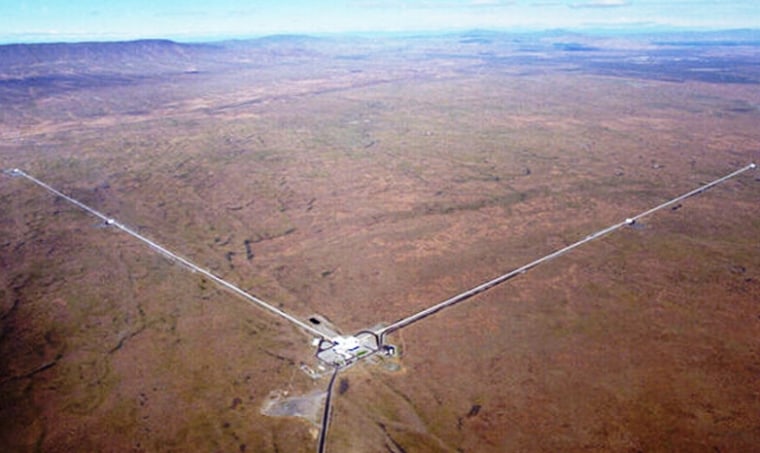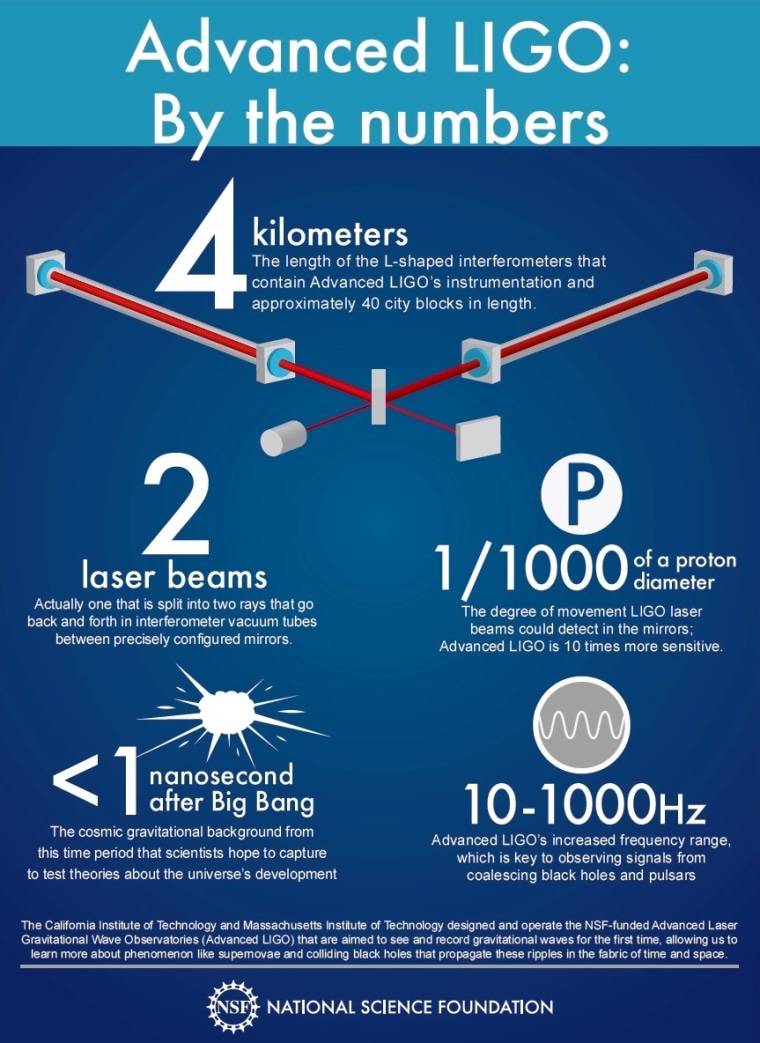After seven years of upgrades, the Advanced Laser Interferometer Gravitational Wave Observatories were dedicated on Tuesday at the LIGO Hanford facility near Richland, Washington.
The facilities are located amid the tumbleweeds of southeastern Washington and the pines of southeastern Louisiana. They're designed to detect the faint signature of gravitational waves given off by supernovas, black hole collisions and other cosmic crashes.
Albert Einstein's general theory of relativity predicts that such waves should exist, but they have never been detected directly. The Advanced LIGO experiment, funded by the National Science Foundation and operated by Caltech and MIT, is expected to change that. It could do for gravitational waves what Europe's Large Hadron Collider did for the equally elusive Higgs boson.

"Advanced LIGO represents a critically important step forward in our continuing effort to understand the extraordinary mysteries of our universe," NSF director France Cordova said in a statement.
The LIGO observatories shoot laser beams down 4-kilometer-long (2.4-mile-long) tubes that have been equipped with mirrors. Theoretically, gravitational waves should produce a tiny shift in the paths of the light beams. That should result in a characteristic interference pattern when the two beams meet. Two facilities were built 1,900 miles (3,000 kilometers) apart, in Louisiana and Washington, to provide a double-check on any scientific findings.
When LIGO went into operation in 2002, the $365 million system was capable of detecting changes equivalent to one-thousandth the size of a proton diameter. But no sign of gravitational waves was found.
Starting in 2008, more than $200 million was allocated to upgrade the optics, the lasers and other components for a more intensive search. Advanced LIGO will be 10 times as sensitive as the original LIGO experiment when it goes into operation this fall, NSF said.
"Advanced LIGO, as opposed to its previous, less powerful incarnation, is almost a no-lose machine, because we know that galaxies collide," physicist Matt Strassler, a visiting professor at Harvard, said on this month's "Virtually Speaking Science" talk show. "When two galaxies collide, their black holes will eventually merge at the center. We can calculate in Einstein's gravity what sort of gravitational waves are produced. And we expect that Advanced LIGO is now the machine that should be powerful enough to observe this."
Strassler said it would be "a great shock and a source of excitement if they don't see this."


